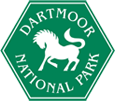Nature projects
In order to look after Dartmoor’s wildlife we have to know where it is and what it needs in order to survive. Our teams carry out ecological surveys, undertake and support research and monitor both the species themselves and the habitats on which those species depend. Current and past surveys include blue ground beetle, southern damselfly, bog hoverfly, marsh fritillary, Vigur's eyebright, barbastelle bat, willow tit, cuckoo, scarce moorland birds.
We have identified the best examples of ancient woodland, wet woodland, wet Rhôs pasture and haymeadows, and we work with their owners to map the habitat as County Wildlife Sites. We advise on habitat management and where grazing with suitable livestock is required we arrange with local farmers to provide hardy Dartmoor ponies to graze the sites in summer.
We run a number of special projects which are aimed at protecting and enhancing particular Dartmoor species and habitats. These projects are delivered in partnership with other organisations including Butterfly Conservation, Devon Birds, Duchy of Cornwall, Buglife and involve local experts and volunteers to achieve practical objectives.
Current Projects
B-lines South West
Dartmoor is of great importance for bees and other pollinating insects due to the south-westerly climate and diversity of high quality habitats such as wildflower-rich grasslands, heathland and moorland. B-lines project, led by Buglife, identifies a network linking the special areas on Dartmoor with similarly important areas both inland and on the coasts of Devon. Actions by farmers and landowners to create, restore and manage their wildflower grasslands will help to maintain and strengthen these wildlife links from moor to coast. Communities can help to influence the management of their public green spaces and road verges for bees. B-line corridors have been mapped around the southern edges of Dartmoor, and in the Dart, Bovey and Teign valleys.
Southern Damselfly project
The southern damselfly is extremely rare. On Dartmoor it occurs in only four small sites which provide the very particular wetland vegetation and runnels required by the aquatic larvae. We work with the owners of these sites and our own ranger service to maintain these special conditions, and every year since 2002 we have counted both the aquatic larvae and the adult damselflies. The results help us to ‘fine tune’ the management of the site. This cooperation has seen numbers increase year on year with 2015 being a record year at most sites.
Recent Projects
All the Moor Butterflies
This partnership project is based on Dartmoor, Exmoor and Bodmin Moor, led by Butterfly Conservation and supported by the Heritage Lottery Fund. On Dartmoor this project monitors high brown and marsh fritillary butterfly sites and works with landowners to ensure these areas are in the best condition to support these butterflies. As a result of this and a previous project the numbers of these critically endangered butterflies are generally stable or increasing on Dartmoor, compared to a national trend of continuing decline.
